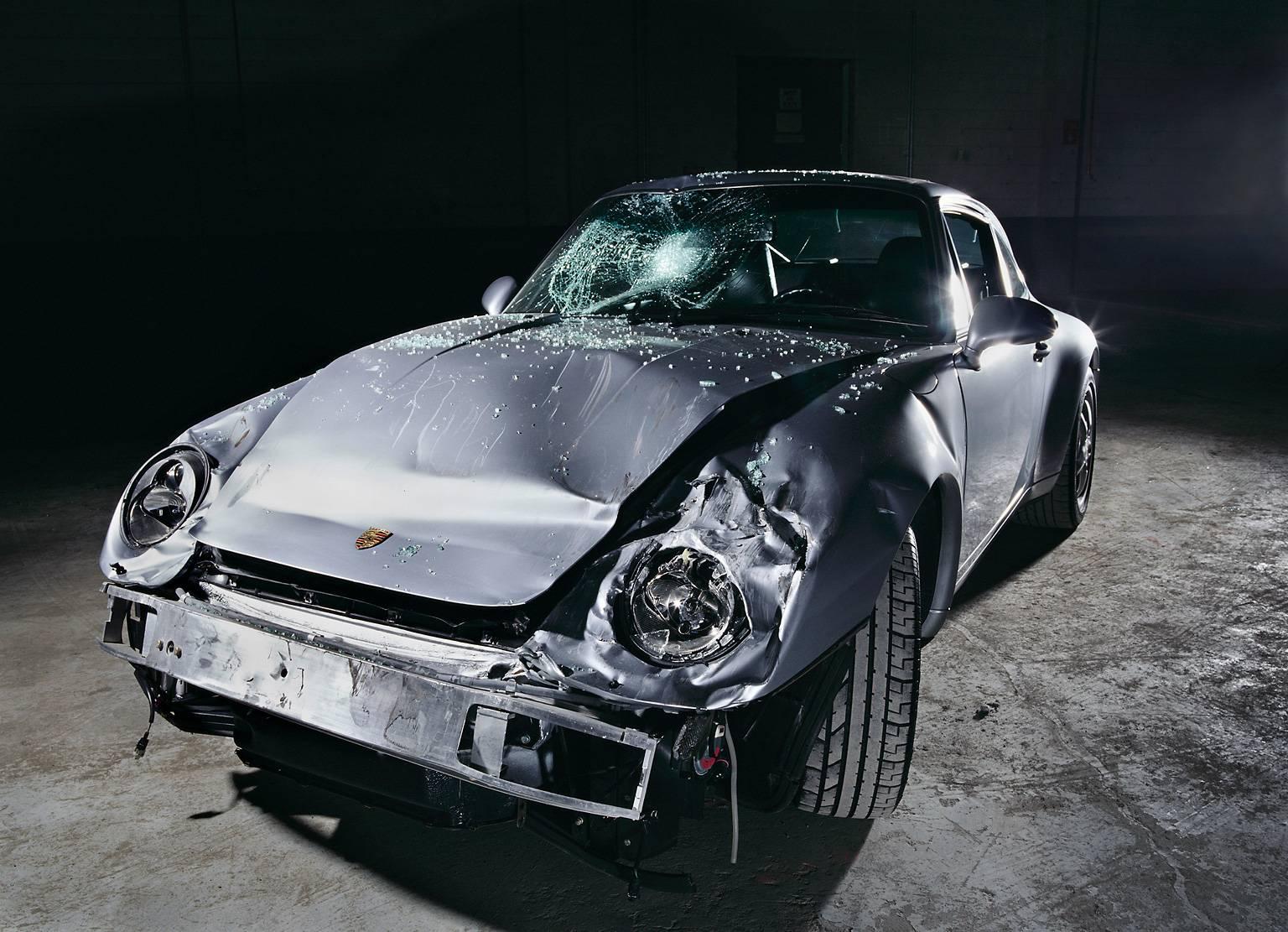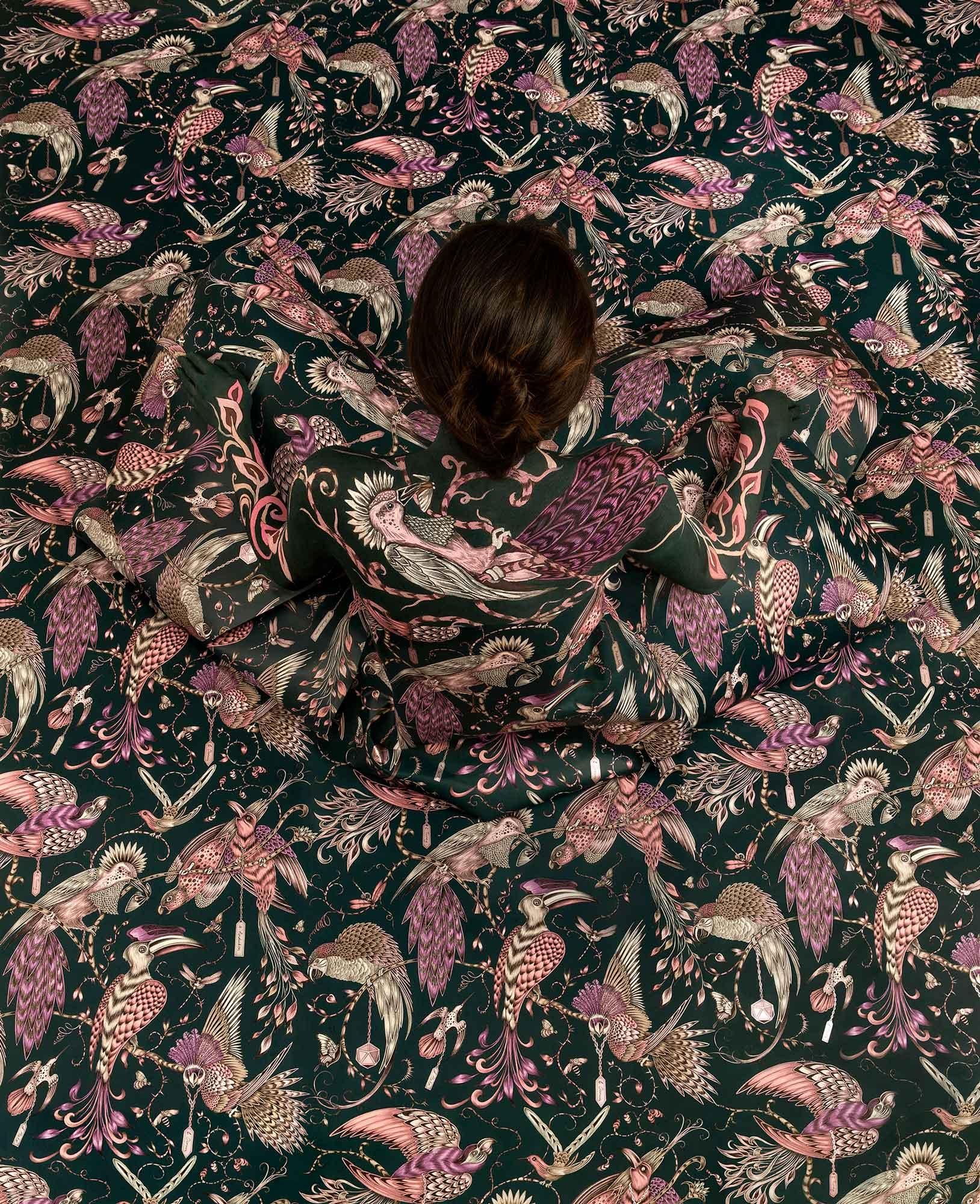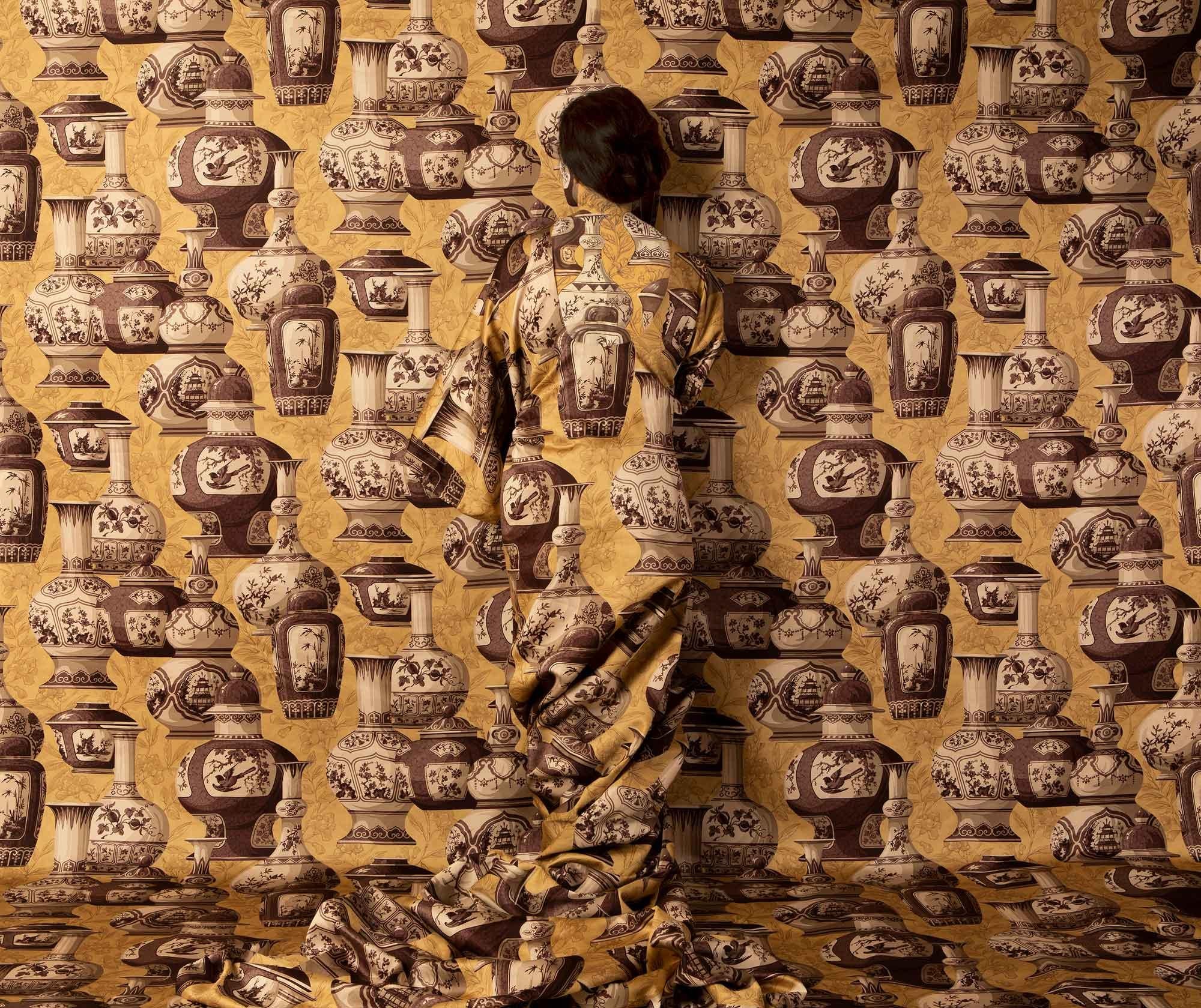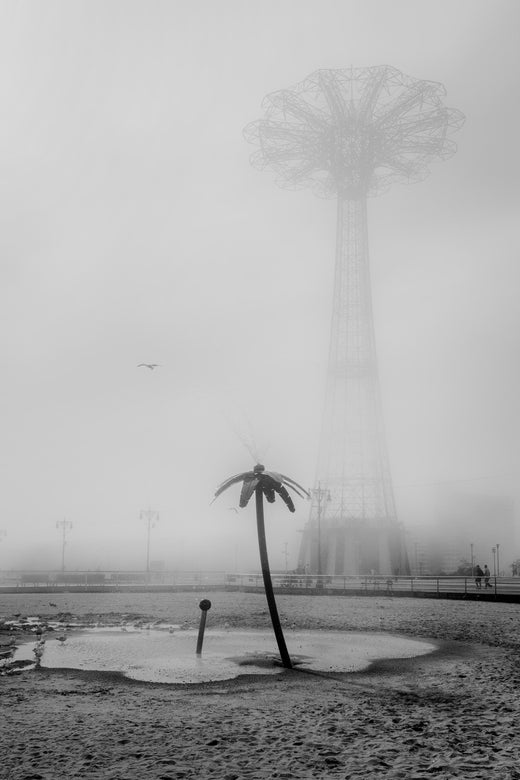Mark Cáceres"Boy with American Flag Shirt, Cummington Fair" - Southern Carnival Photography2016
2016
About the Item
- Creator:Mark Cáceres (1965)
- Creation Year:2016
- Dimensions:Height: 10 in (25.4 cm)Width: 15 in (38.1 cm)
- Medium:
- Movement & Style:
- Period:
- Condition:
- Gallery Location:Atlanta, GA
- Reference Number:1stDibs: LU15523344361
Mark Cáceres
Mark Cáceres was born in Buenos Aires, Argentina, and moved to the United States with his family at a young age. His interest in photography began while he was in college studying anthropology. As an individual with cultural roots outside of the United States, he has always been fascinated by the wide range of cultures both in the United States and abroad. His photography seeks to pose questions about culture, identity and how a viewer is connected to the image. Cáceres resides in Atlanta, Georgia with his wife and daughter.
- ShippingRetrieving quote...Ships From: Atlanta, GA
- Return PolicyA return for this item may be initiated within 7 days of delivery.
- "Coney Island Mist" - Abstract Landscape Photography - New York - Irving PennBy Mark CáceresLocated in Atlanta, GA"Coney Island Mist" is a black and white photograph. Edition of 10. 21.5 by 16.5 inches (framed) Mark Caceres is inspired by the work of Jeff Jacobson, Al...Category
2010s Contemporary Figurative Photography
MaterialsArchival Pigment
- "Chicken Showmanship, Cummington Fair" - Southern Documentary PhotographyBy Mark CáceresLocated in Atlanta, GA"Chicken Showmanship, Cummington Fair" is an edition of 5. Mark Caceres is inspired by the work of Jeff Jacobson, Alex Webb and Alec Soth. Mark Cáceres w...Category
2010s Contemporary Figurative Photography
MaterialsArchival Pigment
- "Cowgirl Queen Contest, Iowa State Fair" - Southern Portrait PhotographyBy Mark CáceresLocated in Atlanta, GA"Cowgirl Queen Contest, Iowa State Fair" is an edition of 5. Mark Caceres is inspired by the work of Jeff Jacobson, Alex Webb and Alec Soth. Mark Cáceres...Category
2010s Contemporary Figurative Photography
MaterialsArchival Pigment
- "Girl with Stock Prod, Cummington Fair" - Southern Documentary PhotographyBy Mark CáceresLocated in Atlanta, GA"Girl with Stock Prod, Cummington Fair" is an edition of 3. Mark Caceres is inspired by the work of Jeff Jacobson, Alex Webb and Alec Soth. Mark Cáceres ...Category
2010s Contemporary Figurative Photography
MaterialsArchival Pigment
- "Rockin’ Tug, Cummington Fair" - Southern Carnival PhotographyBy Mark CáceresLocated in Atlanta, GA"Rockin’ Tug, Cummington Fair" is an edition of 5. Mark Caceres is inspired by the work of Jeff Jacobson, Alex Webb and Alec Soth. Mark Cáceres was born ...Category
2010s Contemporary Figurative Photography
MaterialsArchival Pigment
- "Atlanta Fair" - Southern PhotographyBy Mark CáceresLocated in Atlanta, GA"Atlanta Fair" is an edition of 5. Mark Caceres is inspired by the work of Jeff Jacobson, Alex Webb and Alec Soth. Mark Cáceres was born in Buenos Aires, Argentina and moved to the ...Category
2010s Contemporary Figurative Photography
MaterialsArchival Pigment
- Saddle-billed Storks and ElephantsBy Cheryl MedowLocated in Dallas, TXEdition of 6 Signed and numbered in pencil, and blind stamp on print margin Signed, titled, dated, and print type in pencil on print verso. Paper size: 37 x 30 in., Image size: 30 x ...Category
2010s Contemporary Color Photography
MaterialsArchival Pigment
- HUICHOL: MOUNTAIN, DESERT, NEW YORK (`95-`21). Limited edition of 5.By PABLO ORTIZ-MONASTERIOLocated in Ciudad De México, MXDocumentary Photograph. Contemporary Inkjet on cotton. Limited edition of 5. Signed front and verso. Framed in lacquered black frame with spacer) The first person to photograph the Huichol in their remote communities in the inaccessible canyons of the Western Sierra Madre was probably the Norwegian anthropologist, Carl Lumholtz. He ventured into their territory in 1895, shortly before the arrival of the French naturalist and ethnographer Léon Diguet, who was also a photographer. Like so many who were engaged with documenting Indigenous peoples across the Americas in those brutal years of expansion and settlement, Lumholtz believed that the disappearance of his subjects was inevitable: “the weaker must succumb to the stronger, and the Indians will ultimately all become Mexicans.” The photographs of the Huichol by Pablo Ortiz Monasterio—taken on some twenty trips over the past three decades—prove that Lumholtz was fortunately, terribly wrong. They reveal abundant evidence of cultural survival (what the Huichol call “la costumbre”), made possible by their extraordinary resistance to the religious, nationalist, and economic forces that have long assaulted—and that continue to assault—Indigenous communities everywhere. Though Ortiz Monasterio is also an outsider, he does not operate—like Lumholtz or Diguet—as an old-fashioned preservationist, nor is he confident in the superiority of Western culture, nor is his work only destined for museum vitrines...Category
1990s Contemporary Color Photography
MaterialsArchival Pigment, Inkjet
- Once Upon a Time: Piel de Asno.Located in Ciudad De México, MXFernando Bayona, Once Upon a Time: "Piel de Asno". Fine Art Inkjet Print Sizes: S: 25.6 x 20.8 in. / Ed. 3 M: 41.7 x 33 in. / Ed. 3 L: 53.1 x 41.7 in. / Ed. 2 + 1A.P "The narrat...Category
21st Century and Contemporary Contemporary Color Photography
MaterialsArchival Pigment, Inkjet
- HUICHOL: MOUNTAIN, DESERT, NEW YORK (`95-`21). Limited edition of 5.By PABLO ORTIZ-MONASTERIOLocated in Ciudad De México, MXDocumentary Photograph. Contemporary Inkjet on cotton. Limited edition of 5. Signed front and verso. Framed in lacquered black frame with spacer) The first person to photograph the Huichol in their remote communities in the inaccessible canyons of the Western Sierra Madre was probably the Norwegian anthropologist, Carl Lumholtz. He ventured into their territory in 1895, shortly before the arrival of the French naturalist and ethnographer Léon Diguet, who was also a photographer. Like so many who were engaged with documenting Indigenous peoples across the Americas in those brutal years of expansion and settlement, Lumholtz believed that the disappearance of his subjects was inevitable: “the weaker must succumb to the stronger, and the Indians will ultimately all become Mexicans.” The photographs of the Huichol by Pablo Ortiz Monasterio—taken on some twenty trips over the past three decades—prove that Lumholtz was fortunately, terribly wrong. They reveal abundant evidence of cultural survival (what the Huichol call “la costumbre”), made possible by their extraordinary resistance to the religious, nationalist, and economic forces that have long assaulted—and that continue to assault—Indigenous communities everywhere. Though Ortiz Monasterio is also an outsider, he does not operate—like Lumholtz or Diguet—as an old-fashioned preservationist, nor is he confident in the superiority of Western culture, nor is his work only destined for museum vitrines...Category
1990s Contemporary Color Photography
MaterialsArchival Pigment, Inkjet
- HUICHOL: MOUNTAIN, DESERT, NEW YORK (`95-`21). Limited edition of 5.By PABLO ORTIZ-MONASTERIOLocated in Ciudad De México, MXDocumentary Photograph. Contemporary Inkjet on cotton. Limited edition of 5. Signed front and verso. Framed in lacquered black frame with spacer) The first person to photograph the Huichol in their remote communities in the inaccessible canyons of the Western Sierra Madre was probably the Norwegian anthropologist, Carl Lumholtz. He ventured into their territory in 1895, shortly before the arrival of the French naturalist and ethnographer Léon Diguet, who was also a photographer. Like so many who were engaged with documenting Indigenous peoples across the Americas in those brutal years of expansion and settlement, Lumholtz believed that the disappearance of his subjects was inevitable: “the weaker must succumb to the stronger, and the Indians will ultimately all become Mexicans.” The photographs of the Huichol by Pablo Ortiz Monasterio—taken on some twenty trips over the past three decades—prove that Lumholtz was fortunately, terribly wrong. They reveal abundant evidence of cultural survival (what the Huichol call “la costumbre”), made possible by their extraordinary resistance to the religious, nationalist, and economic forces that have long assaulted—and that continue to assault—Indigenous communities everywhere. Though Ortiz Monasterio is also an outsider, he does not operate—like Lumholtz or Diguet—as an old-fashioned preservationist, nor is he confident in the superiority of Western culture, nor is his work only destined for museum vitrines...Category
1990s Contemporary Color Photography
MaterialsArchival Pigment, Inkjet
- HUICHOL: MOUNTAIN, DESERT, NEW YORK (`95-`21)By PABLO ORTIZ-MONASTERIOLocated in Ciudad De México, MXThe first person to photograph the Huichol in their remote communities in the inaccessible canyons of the Western Sierra Madre was probably the Norwegian anthropologist, Carl Lumholtz. He ventured into their territory in 1895, shortly before the arrival of the French naturalist and ethnographer Léon Diguet, who was also a photographer. Like so many who were engaged with documenting Indigenous peoples across the Americas in those brutal years of expansion and settlement, Lumholtz believed that the disappearance of his subjects was inevitable: “the weaker must succumb to the stronger, and the Indians will ultimately all become Mexicans.” The photographs of the Huichol by Pablo Ortiz Monasterio—taken on some twenty trips over the past three decades—prove that Lumholtz was fortunately, terribly wrong. They reveal abundant evidence of cultural survival (what the Huichol call “la costumbre”), made possible by their extraordinary resistance to the religious, nationalist, and economic forces that have long assaulted—and that continue to assault—Indigenous communities everywhere. Though Ortiz Monasterio is also an outsider, he does not operate—like Lumholtz or Diguet—as an old-fashioned preservationist, nor is he confident in the superiority of Western culture, nor is his work only destined for museum vitrines...Category
1990s Contemporary Color Photography
MaterialsArchival Pigment, Inkjet






